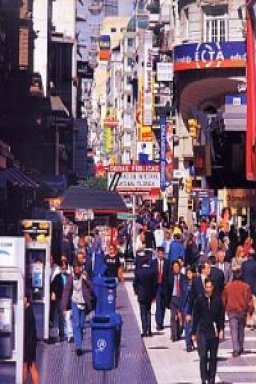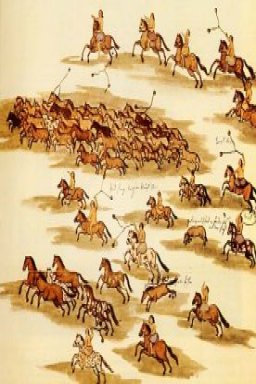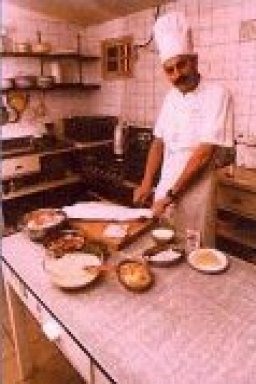The sensual Tango
"Buenos Aires, the queen of Plata
Buenos Aires my beloved land
listen to my song
that my life goes into it....."
Buenos Aires the city of tango
The sensual Tango
"Buenos Aires, the queen of Plata
Buenos Aires my beloved land
listen to my song
that my life goes into it....."
Buenos Aires the city of tango
In Argentina there are two national anthems: the first is the one that is performed in the official ceremonies "Mi Buenos Aires Querido" (My Beloved Buenos Aires) and the other is the tango, the most representative form of the country's popular spirit.
Most of the dance halls where tango was born and developed no longer exist and their names now survive only in the lyrics of the songs and in the memories of the older people who tried their hand at its complex steps during the golden age of this dance , before the Second World War. But tango is not just a memory of the past, on the contrary, it is currently experiencing a second youth. Indeed, it is so popular that it is rumored that the Japanese bought the Odeon Theater for 18 million dollars to make it an international "house of tango".
The history of this music, at the same time sensual and melancholic, spokesperson for nostalgia for an irrecoverable past and hope for an uncertain future, begins towards the end of the last century, when the entire Río de la Plata region, both in Uruguay which in Argentina saw multitudes of immigrants arriving from Europe who added to the thousands of criollos returning home after the wars of independence against Spain. Most of these found accommodation in the port districts of Buenos Aires and Montevideo.
In the rough environment of immigrants, war-weary veterans and poor workers, the pulsating rhythms that arrived with the African slaves merged with the unforgettable melodies of Andalusia and southern Italy and the local folk music of the milongas. Whorehouses and stale warehouses scattered in the most hidden corners of the city were the first scene of this music accompanied by dances and melodies of the African candomblé and the habanera, an Antillean dance, with a language that was the jargon of petty thieves and scoundrels. Towards the end of the last century a miracle occurred and from the fusion of so many different cultural elements a new phenomenon was born, the tango.
The exact moment and place of this birth will perhaps forever remain a mystery capable of fueling endless controversies, but one thing is certain, it did not happen at all in "respectable" circles. The favorite meeting places for members of the lower classes of that period were the brothels, which generally arose in the semi-rural areas of Buenos Aires, in Retiro (where the northern railway stations are now located), in Palermo and in the port areas of La Boca and Via 25 de Mayo, as well as in the streets near Plaza Lavalle.
In the rooms, while customers waited their turn, the musicians played and sang songs whose lyrics described erotic, if not obscene, situations, and perhaps it was from this that tango's fame as a licentious musical expression was born. In that world the protagonists of the scene were, and still are, couples of men who moved "morously" under a pale light and the occasional shine of a knife blade, to the music of the guitar, flute and violin (initially it was a purely musical dance, without words). Due to the unorthodox environment in which tango had its origins, only a few of the original compositions have come down to us and their authors remain unknown or known only by their imaginative nicknames.
 The first "signed" tango was that of the mestizo pianist Rosendo Mendizabal, who wrote El Enterriano in 1896.
The first "signed" tango was that of the mestizo pianist Rosendo Mendizabal, who wrote El Enterriano in 1896.
This music, however, did not remain confined to brothels for long and soon in the slums, in the poorest areas of southern Buenos Aires, its notes spread, strummed from pianos on street corners. Over time, tango also made its appearance in popular shows such as the famous sainetes plays.
At the beginning of the century he had conquered new audiences and his audience had expanded and included the entire population, except of course the usual members of the higher classes, who were still officially scandalized.
In 1904 the popular magazine Caras y Caretas announced this new cultural phenomenon in an article that aroused the conservative class in reactions of condemnation for the spread of this lascivious and obscene dance. But over the years, music and its mythical power began to seduce the "good" young people, pushing them to mix with the inhabitants of the barrios in initial escapades. Here the scandal of the best porteña club led tango to gain a social and economic space, conquering the market with the show. Raising the level with a noble instrument like the piano was one and the same. And the incorporation of the piano was fundamental to achieve a definitive identity, in fact during the first years the size of the orchestra that performed the tango was variable since generally the musicians were poor and used the instruments made available by those who hired them or those that they could afford to rent. The timbres of the guitar, violin, flute and piano mixed with the most characteristic instrument of tango, the bandoneon, a bellows instrument that is a close relative of the accordion. Even today the best bandoneones repairers live in Buenos Aires and this instrument passes from generation to generation and from hand to hand, like a family relic.
In the first decade of the 20th century the city of Buenos Aires, and with it the tango, transformed: with the First World War the tango crossed the ocean and spread to European cafés, enjoying great success; furthermore, the increase in exports of agricultural products increased contacts with Europe and the rich Argentines who had appreciated the Parisian clubs and cafés tried to rebuild these environments once they returned home. The increased demand for places of leisure was partly satisfied by the old bars, taverns and brothels, but new, more elegant cabarets were also opened.
Another stimulus to changes was the arrival of the recording industry which in 1913 began to distribute records produced in Buenos Aires. When, in 1917, the Victor Records record company recorded the young voice of Carlos Gardel performing "Mi Noche Triste", an era had definitively passed and a new era had begun: his melodious voice conquered not only Argentina and Latin America, but the whole world.
 Carlos Gardel was the first international tango star. The development of his career reflects the most important developments of this musical genre in the period of its greatest success. Although many enthusiasts hate to admit it, it appears that Gardel, born around 1881, is not Argentine. Recordings, the radio and the advent of sound in cinematography contributed to making him a star and spreading tango to a much wider audience. Together with the writer Alfredo Le Pera, Gardel composed a good part of the most classic tangos. In 1929 Gardel went to Paris and later acted in some films in the United States. His death in a plane crash on June 24, 1935, at the height of his career, closed the circle of his semi-sacred condition: when the ship carrying his body docked in Buenos Aires, hundreds of thousands of people were waiting to give the last farewell to the "pibe del Abasto", the child from the Abasto neighborhood, the area near the old Central Market, where in 1984 the metro stop was named after him.
Carlos Gardel was the first international tango star. The development of his career reflects the most important developments of this musical genre in the period of its greatest success. Although many enthusiasts hate to admit it, it appears that Gardel, born around 1881, is not Argentine. Recordings, the radio and the advent of sound in cinematography contributed to making him a star and spreading tango to a much wider audience. Together with the writer Alfredo Le Pera, Gardel composed a good part of the most classic tangos. In 1929 Gardel went to Paris and later acted in some films in the United States. His death in a plane crash on June 24, 1935, at the height of his career, closed the circle of his semi-sacred condition: when the ship carrying his body docked in Buenos Aires, hundreds of thousands of people were waiting to give the last farewell to the "pibe del Abasto", the child from the Abasto neighborhood, the area near the old Central Market, where in 1984 the metro stop was named after him.
Since then his tomb in the Chacarita cemetery in Buenos Aires has always been adorned with fresh flowers and despite the time that has passed since his tragic death, the porteña people (a popular name for the inhabitants of Buenos Aires) say that "every day he sings better".
Names like Villoldo, Canaro, Fresedo, D'Arienzo, Troilo, Pugliese and Piazzolla among the musicians; Corsini, Lamarque, del Carril, Vargas, Sosa and Goyeneche among the singers; Manzi, Castillo, Flores, Cadicamo and Discepolo among the poets give rise to a varied, profitable and high-level production.
The fortunes of tango have always been linked to the social conditions of the country. At the end of the 1930s it underwent a period of decline, but recovered under the Peronist governments, from 1945 to 1955, thanks to the increase in nationalism and higher wages for workers and the consequent opening of many dance halls and nightclubs.
At the end of the 1950s tango entered a crisis again, partly due to the political failures of its supporters and partly due to the competition from other popular forms (especially rock & roll), but above all because many of its big interpreters had disappeared.
Subsequently, new characters emerged with innovative ideas on how to resurrect and renew tango: the Argentine musicians who today perform in the clubs of Avenida Corrientes (the street of tango) have reworked the ancient tradition of tango, creating a new form musical called "neotango" of which the greatest exponent was undoubtedly the tanguist Astor Piazzola, who exploited his training as a classical musician and his jazz experiences, giving life to a series of very daring musical fusions that gave him credit even in Europe and the United States.
Tango is music, dance and also poetry. It's nostalgic, but also picaresque and funny, dramatic or passionate. Its theme is friendship, love, the neighborhood and the life of the porteños. It is a dance full of elegance and sensuality. The poet well defines his rhythm "that is joker and companion and that was born of the sordid arrabal seeking the sky." ("who is gay and braggart, born in a dirty suburb in search of heaven").
 Tango surprises, it plays hide and seek with tourists: it is not much of a part of public events, nor is it seen during daily life, except at night. But you can hear it. You listen to the radio on the bus, in a taxi, in the office or in a bar; in the slang of the city (lunfardo); everywhere.
Tango surprises, it plays hide and seek with tourists: it is not much of a part of public events, nor is it seen during daily life, except at night. But you can hear it. You listen to the radio on the bus, in a taxi, in the office or in a bar; in the slang of the city (lunfardo); everywhere.
At night the city offers many tango shows. When in the evening you dive into the fascinating atmosphere of the tanguerías, the places where tourists while eating and drinking can enjoy the show of the artists and dancers, to listen to sweet melodies and see couples entwined dancing in perfect synchrony, perhaps you would be perplexed coming aware of the primitive ritual that lies behind these notes. However, tango is part of Argentine history and life and it is advisable to attend a performance at least once.
THE CITY OF TANGO: BUENOS AIRES
Melting pot of races, host of the "country of six continents", business, commerce, industry, seat of government, culture, folklore, fashion, glamour, joy, melancholy, temple of classical music, polo, tango, and many other aspects , nestled on the Río de la Plata, Buenos Aires, "the lady" of Latin American cities, emerges multifaceted in every season of the year with its physiognomy that makes it unique.
In the Argentine capital the attentive traveler finds traits of Paris, London, Madrid, some Italian cities, San Francisco, with multiplicity of cultural influences which, in a constant process of evolution and research, have determined its undeniable uniqueness. In fact, it may resemble many cities all together but it is not the same as any other: and it is Buenos Aires.
Founded in 1580, it was the "poorest city of the Spanish empire in America" according to historians of the time, located in the middle of a double sea, that of the immense and unknown wild Pampas and the Río de la Plata. Before 1610 it had no more than five hundred inhabitants who, to survive, were totally dependent on the ships that arrived from Spain.
As the years passed, the boundless prairie that surrounded it, with an abundance of herds that Europe at the time could not even imagine, provided its inhabitants with leather for export since the large quantity of meat used only for local food, it was abandoned and became the meal of wild dogs, a plague on the pampas that surrounded the city.
Historical vicissitudes meant that over the centuries the city survived various periods. Thus, at first small fortresses were built to defend the inhabitants from attacks by the Indians. Subsequently, incipient properties were created which over time became the large estates (estancias) that surrounded it. Slowly a timid local industry and a limited hybrid trade arose, manifestations which after years of evolution have given rise to the current feverish activity of transcendental importance in the Argentine capital.
In the last decades of the 18th century, a city society began to form with particular traits and habits that still retained the characteristics of the motherland.
Between 1860 and 1880 a process took place whose development made the constitutional organization of Argentina possible. Inserted in this evolution of history, Buenos Aires had a very rapid expansion through those works and public services that make a large village (the gran aldea) a city and already in 1910 its panorama, for the newly arrived traveller, gave the idea of a large and complex metropolis.
Then the two great world wars and their consequences gave a further pace of rapid economic and social development, with their ups and downs, which brought Argentina and with it its capital, to the top places in the world.
Today this metropolis in the south of the world welcomes every traveler with brotherhood and friendliness. Here the mark of Italian immigration, especially coming from Liguria, can be found in the La Boca barrio where red, green, light blue and pink huts form a polychrome ensemble near the Riachuelo, a neighborhood which has now become touristy where you can see people dancing at any time tango on the street.
The La Recoleta neighborhood is the aristocratic showcase of this democratic city with its gardens and its luxurious restaurants and cafés where the shops display internationally renowned clothing.
The Plaza de Mayo, central point of Argentine history with the famous Casa Rosada (seat of Government), the Cathedral, the Banco de la Nación is the faithful memory of the plan with which the Spaniards traced their city.
It should also be remembered that the streets of Buenos Aires boast two records: Calle Rivadavia, the longest in the world, and Avenida 9 de Julio, the widest, in which the obelisk symbol of the city stands in the middle and where the Teatro Colón, the fourth theater in the world for opera and the greatest venue for classical music in South America.
Extensive and well-kept parks, such as those in the area called Palermo, north of the city, with the botanical and zoological gardens bring to mind London and large avenues such as Corrientes have an intense life twenty-four hours a day, where, among other things, day and night you can buy books, taste pizzas or go to restaurants, and where cinemas and theaters offer shows for all tastes.
But the Portuguese street par excellence is the pedestrian Florida, in the heart of the city, with a succession of shops where the spirit of Buenos Aires "lives", this city where there are countless places to visit such as San Telmo with its street market antiquities, the Tigre, Delta area, Puerto Madero and many, many others.
In this city, with its approximately ten million inhabitants and its 46 neighborhoods (barrios), the bureaucratic and economic capital of one of the largest countries in the world, its people have acquired characteristics that distinguish the portegno (the ancient inhabitant of the port ) and although its transformation has been constant since the beginning, today it is similar to that of the large Western cities while retaining its own identity and characteristics.
It is undeniable that here there was the indomitable spirit of the Indian, the transhumance, the pride and individualism of the gaucho, as well as his cult of friendship, the formative basis of a Spanish society of conquest, but with its own culture and deep religious feelings. And then continuous flows of immigrants, especially Italians, Spaniards, Syrian-Lebanese, French, Germans, Poles and of every nationality who came to "make America". Thus the inhabitant of Buenos Aires found himself in a world with different sensitivities overwhelmed by a flood of immigration where the family had a dominant position in society.
We must take into account some habits and characteristics that distinguish the inhabitant of Buenos Aires. For example, there is no more portentous experience than sitting at a table in a café watching people through the glass window while having a drink. El café was the place where the male immigrant, without social relationships, found friendship and company, where they played cards and billiards. It is the place sung in tangos and popular poems as an authentic sanctuary of human relationships.
And the barra, the group of men who, especially at the beginning of the 20th century, often gathered to go and have fun, for whom non-betrayal of a friend was indispensable and the crying of a man was one of the worst sins.
In this environment, where the peculiarity and sadness was something intimate, where the sensitivity and sentimentalism given by the infinite landscapes of the pampas had an influence, where the cult of the mother was impregnable, where "the emigrant's son was capable of teach the foreign father the science of life which is so difficult to learn for those who have moved to a new country" (these are the words of Emilio Daireaux), the most portentous of musics, the tango, was born.
Typical of Buenos Aires, you can feel it in the air, in the environment, in the senses, in buses, in trams, in taxis, in bars, on the radio, sung in its language, Lunfardo, the slang of the city.
It contains all the expressions of being Argentine and of the Argentine land. Born among native inhabitants and immigrants in the underworld, in the beginning it was a wordless music with Hispanic, African and Creole rhythms that was danced between men. It is the dance of nostalgia, of male supremacy, and of silence in which voluptuous leg movements intertwine in a single chord, of the rhythm strongly marked with sad words, of finished loves, of heartbreaking deaths, of pessimistic philosophies, of love for the mother who is no longer there, of masculine strength.
Bastard by birth, raised in the underworld environment, supported by the bandoneón, his instrument, today it is a universal dance known worldwide and magnificently represented by some dancers who give life to this art.
For those who want to live, feel, breathe it, all that remains is to go there, to that tenderly hospitable city where its people make everyone feel immediately at ease, about which someone has sung:
"Buenos Aires, the queen of Plata Buenos Aires my beloved land listen to my song that my life goes in it....."
Special Argentina...
REPORTAGE

Discovering...
Read
Buenos Aires
Tourist trains
Coming soon
in Argentina
Snow in summer
Coming soon
is called South America
C'era una volta...
Coming soon
un'altra Pampa
La cucina tipica
Coming soon
argentina
L'esercito...
Coming soon
più pacifico del mondo
Lo show
Coming soon
delle balene in Patagonia